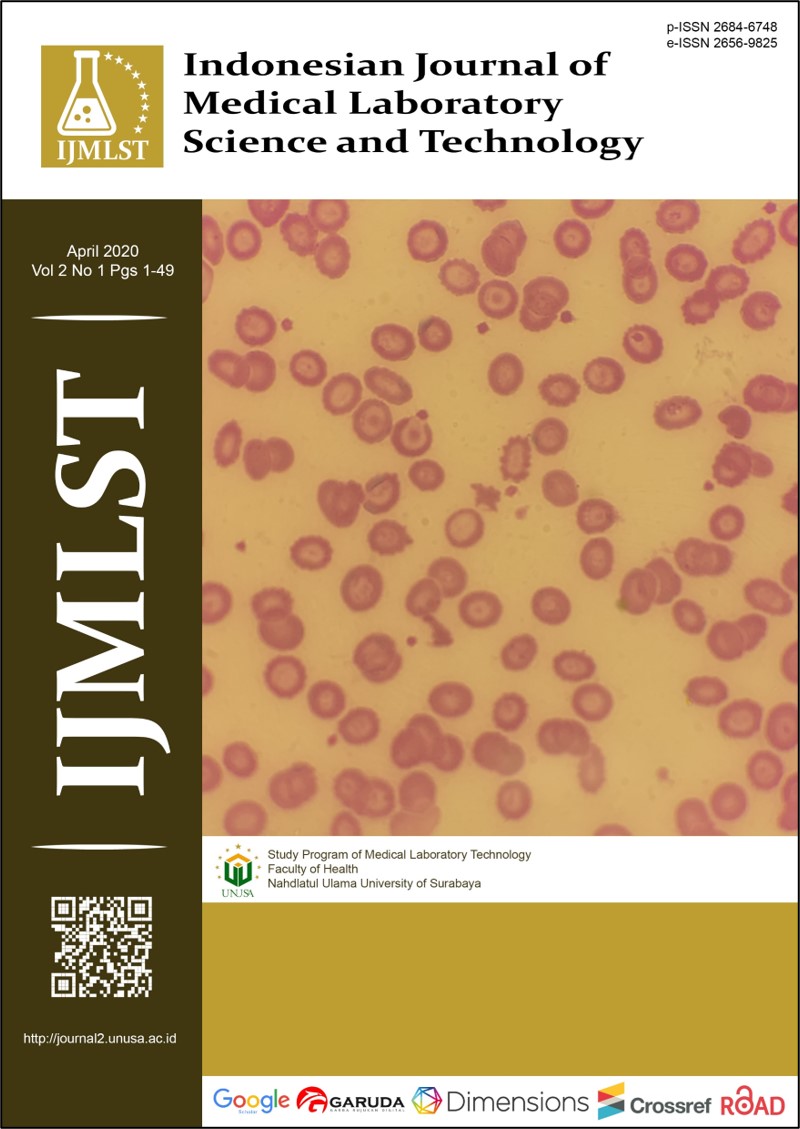BLOOD LEAD CONCENTRATIONS AND THE NEUROPSYCHOLOGY SCORES OF PREGNANT WOMEN IN KLANG VALLEY, MALAYSIA
Main Article Content
Abstract
Pregnant women with high blood lead posed high risk to their fetus as placental transfer can occurs to the fetus. The objective of this study was to identify the relationship between blood lead and the neuropsychological score of women who were in their 3rd trimester of pregnancy. These respondents were undergoing a routine antenatal checkup at a teaching hospital located in Klang Valley areas. Blood lead concentrations were analyzed using graphite furnace Atomic Absorption Spectrophotometer (AAS). The neuropsychological scores were measured with WHO Neurobehavioral Core Test battery (NCTB). The test consists of 7 items, which made up of the Digit Symbol, Trail Making, Digit Span, Benton Visual Retention Test, Pursuit Aiming, Santa Ana Manual Dexterity, Reaction Time and Movement Time tests. The mean blood lead was 7.78±4.77 µg/dL. The mean score for the total NCTB test was 50.00±5.24. Statistical analysis showed blood lead concentrations were inversely correlated with the total NCTB score (r= –0.462, p≤0.01). The correlation was about 21.3%. The General Linear Model (GLM) showed that age (β= –0.15, p=0.017), weight (β=2.67, p=0.05) and height (β=–1.97, p=0.05) also influence the total neuropsychological scores. In conclusion, blood lead reduces the total neuropsychological scores. The scores for each of the 7 items were inversely and significantly correlated with blood lead concentrations except for the Trail Making and Santa Ana Manual Dexterity tests.
Downloads
Article Details
References
Rubens O, Logina I, Kravale I, Eglite M, Donaghy M. Peripheral neuropathy in chronic occupational inorganic lead exposure: a clinical and electrophysiological study. J Neurol Neurosurg Psychiatry. 2009; 71: 200–204.
Mahaffey KR. (1995). Nutrition and lead: Strategies for public health. Env Health Perspect. 1995; 103(6):191–196.
Anger WK. Reconsideration of the WHO NCTB strategy and test selection. 2015; 0: 224–231.
Forsyth JE, Islam MS, Parvez SM, Raqib R, Rahman MS, Muehe EM, Fendorf S, Luby SP. Prevalence of elevated blood lead levels among pregnant women and sources of lead exposure in rural Bangladesh: A case control study. Env Res. 2018; 166:1–9.
Marangoni F, Cetin I, Verduci E, Canzone G, Giovannini M, Scollo P, Corsello G, Poli A. Maternal diet and nutrient requirements in pregnancy and breastfeeding. An Italian consensus documents. Nutrients. 2016; 8(629): doi:10.3390/nu8100629.
Saunders AV, Craig WJ, Baines SK, Posen JS. Iron and vegetarian diets. 2012: 2: 11–16.
León OL, Pacheco JMS, Martínez SE, Rodríguez EE, Juárez FXC, Carrilo AS, Quiñones, Alanís FV, Vargas GG, Hernández MM, Sustaita JD. The relationship between blood lead levels and occupational exposure in a pregnant population. BMC Pub Health. 2016; 16(1231): doi.10.1186/s12889–016–3902–3.
Bede–Ojimadu O, Amadi CN, Orisakwe OE. Blood levels in women of child–bearing age in Sub–Saharan Africa: A systematic review. 2018; 6 (367): doi:10.3389/fpubh.2018.00367.
Moon CS, Zhang ZW, Watanabe T, Shimbo S, Noor Hassim I, Jamal HH, Ikelda M. Malay women in Kuala Lumpur, to cadmium and lead. Biomarkers. 1996; 1:81–85.
Taylor CM, Golding J, Hibbeln J, Emond AM. Environmental factors predicting blood lead levels in pregnant women in the UK: The ALSPAC study. PLoS One. 2013; 8(9): doi.org/10.1371/journal.pone.0072371.
Ridzwan SFM, Annual ZF, Sahani M, Ghazali AR. Neurobehavioral performance of estate residents with privetly–treated water supply. Universiti Putra Malaysia, Serdang. Iran J Public Health. 2013. 42(12): 1374-1386.
Zailina H, Nurunniza ZA, Shamsul BS. Comparison of blood lead and the relationship with neuropsychological scores among battery factory workers and administration workers in Selangor, Malaysia. Sains Malaysiana. 2004; 33(1):83–100.
Shamsul BS, Jamal HH, Nasri NIN, Rahman AJB. The effects of blood lead on the neuropsychology score of 3rd trimester pregnant women in the Klang valley, Malaysia. J Dis Glo Health. 2016; 11(3): 134–141.





